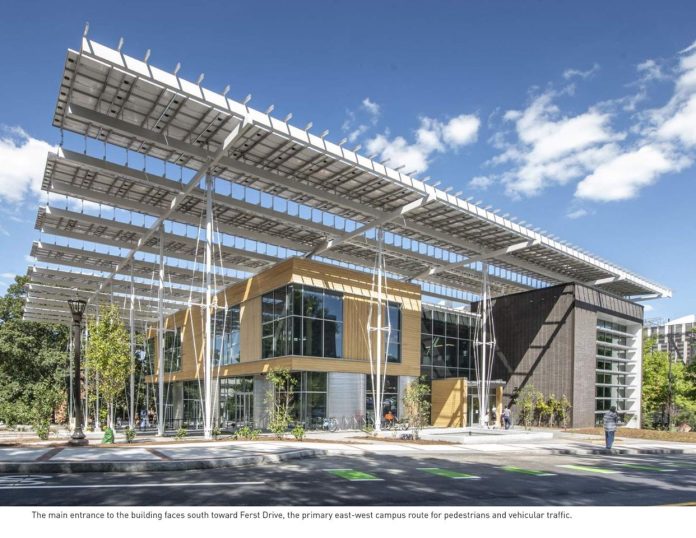
The 70th annual Honor Awards showcase Seattle’s flourishing architectural design community.
I’ll always hold a soft spot in my heart for the old Burke Museum of Natural History and Culture, specifically its café, a cozy wood paneled hideaway on the University of Washington campus where I used to hunker down to grade papers while nibbling on stale croissants. But after watching the 2020 American Institute of Architects (AIA) Seattle chapter’s 70th annual Honor Awards for Architecture, my nostalgia has been replaced by the desire to experience firsthand the new Burke Museum, one of the four 2020 AIA Seattle Honor Award winners and a clear example of how architectural design can embody the ethic of spatial justice, a way of looking at justice from a critical spatial perspective that’s often linked to Henri Lefebvre’s concept of the right to the city:
The question of what kind of city we want cannot be divorced from that of what kind of social ties, relationship to nature, lifestyles, technologies, and aesthetic values we desire. The right to the city is far more than the individual liberty to access urban resources: it is a right to change ourselves by changing the city.
The former Burke Museum had its charms, but it also had distinct limitations. As is the case in many museums, the vast majority of its natural history specimens and cultural artifacts were confined to storage. Additionally, the museum was the product of a colonial legacy which displayed Native American artifacts, some of which had been taken from Native American communities without their consent, stripped of their cultural context and significance.
The new Burke Museum, however, turns the traditional concept of the museum–literally–inside out. In partnership with community leaders, the design team from architectural firm Olsen Kundig created a one-of-a kind building in which research labs are integrated into gallery spaces, allowing the public to view approximately 60% of the museum’s collections at any given time. The building was also designed to be culturally responsive. A Native American advisory board collaborated with the design team throughout the planning process to ensure the increased access to artifact collections remained respectful and culturally sensitive.
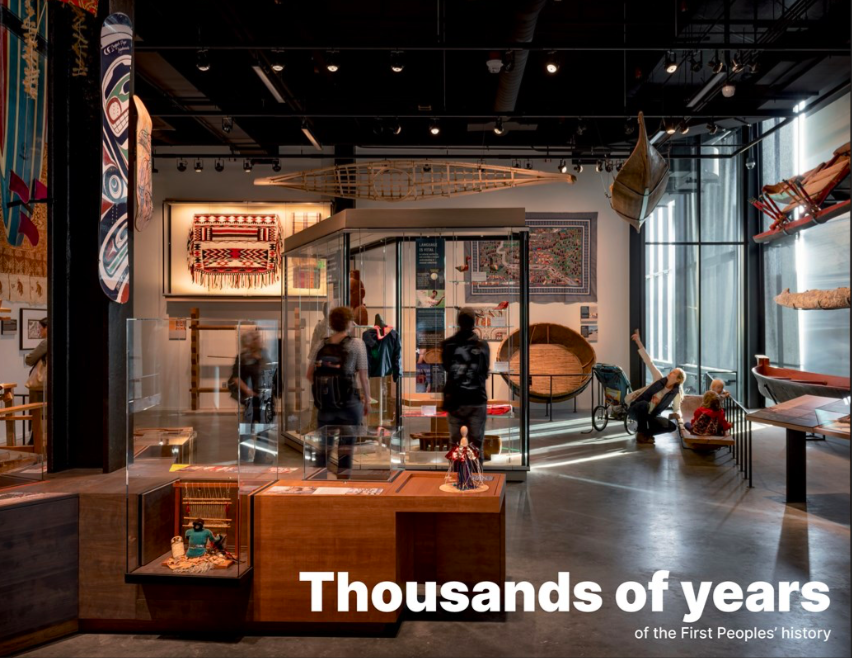
Environmental sustainability was another design priority, and distinctive features, like the exterior siding made from Burke’s Scots pine which will silver with age in a manner reminiscent of the Coast Salish people’s traditional cedar buildings, connect both environmental and cultural values.
In her opening remarks, AIA Seattle Honor Award judge Pascale Sablan (Beyond the Built Environment + S9ARCHITECTURE) referenced the importance of spatial justice in her decision-making process as she evaluated the 103 competition submittals. “Spatial justice goes hand in hand with environmental justice,” Sablan said, “but it also means culturally embedding the individuals of that community into the built environment, having architecture be a representation of lives and aspirations.”
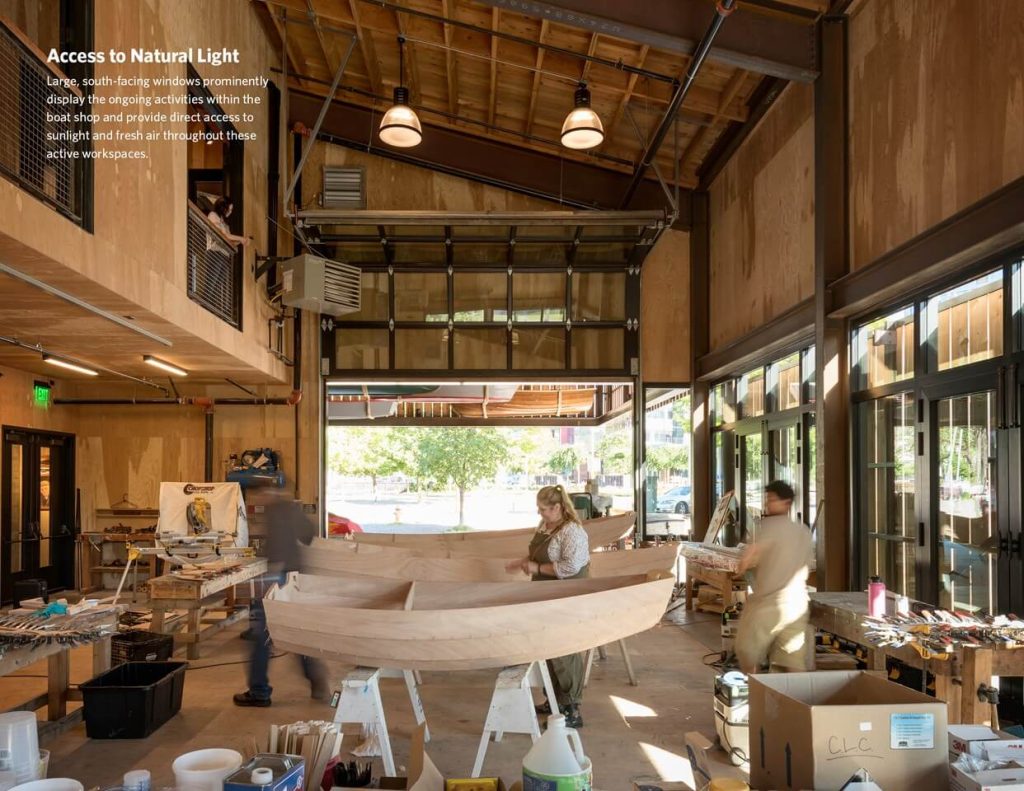
The new Burke Museum was not the only recently redesigned Seattle landmark to earn accolades from the AIA Seattle judges. The Wagner Education Center at the Center for Wooden Boats and the new Hugo House also received the competition’s highest honors. Together these buildings demonstrate a significant shift toward greater social and environmental awareness in the design and planning of longstanding Seattle institutions. In their remarks, the jury highlighted how Seattle’s strong design culture has led to the creation of “beautiful and inspired projects that are committed to sustainability and tackling social issues, engaging with the projects communities while also solving site relationships elegantly and simply.”
Honoring environmental responsibility
In her remarks, 2020 AIA Seattle Honor Award judge Marsha Mayhem (LMSA), noted that the question of “how [architects] can tack carbon in [their] work, side by side with how [they] can make contributions to [their] community” is crucial. This year the AIA Seattle Honor Awards updated its Energy in Design Award to incorporate the AIA Committee on the Environment common app tool, which offers a more holistic view of sustainability than previous criteria. The winning submission, the Kenada Building for Innovative Sustainable Design, designed by Miller Hull Partnership, impressed the judges with its attainment of the rigorous Living Building certification. The project features a reimagined iconic Southern porch that includes a solar panel array capable of producing 100% of the buildings electricity and rainwater collection system capable of meeting 100% of the building’s water needs. The award was presented by Prof. Chris Meek, faculty member and director of the University of Washington Department of Architecture Integrated Design Lab.
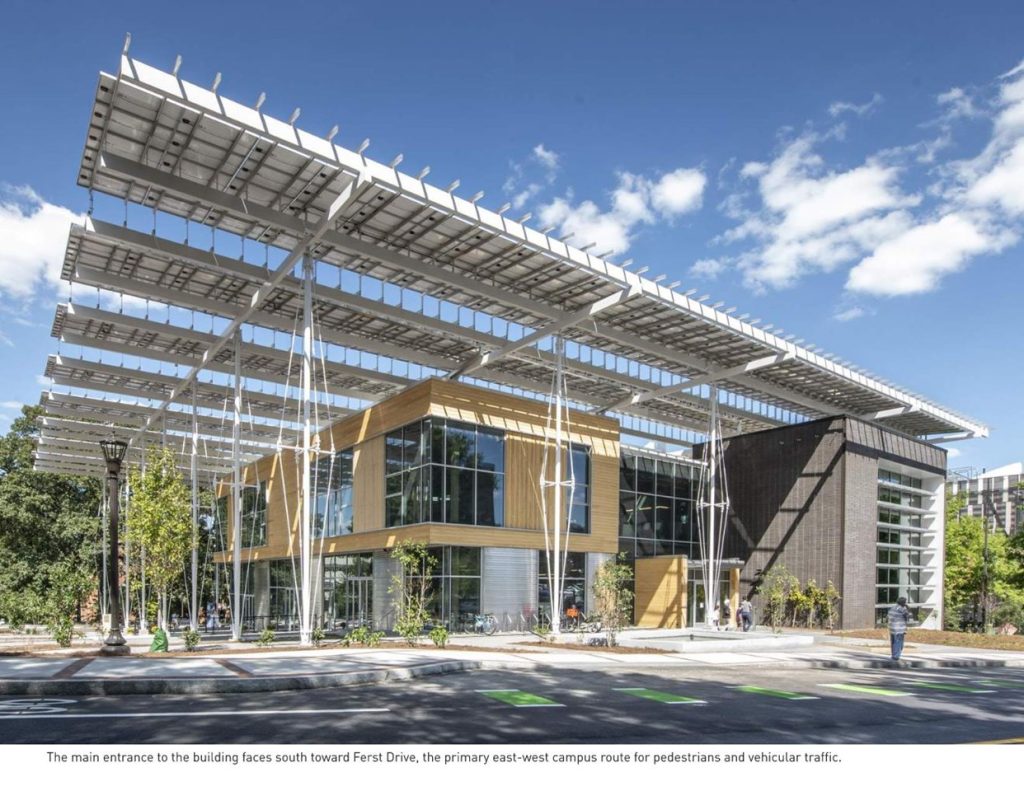
But while the Kenada Building might have wowed the judges with its commitment to environmental responsibility, a number of the other projects also embodied this ethic, including the Cottonwood Canyon Experience Center by Signal Architecture + Research, another of the four Honor Award winners. Located in a newly minted Oregon state park of the same name, the Cottonwood Canyon Experience Center showcases its environmental ethic through a number of features, but I was most impressed by the use of Juniper wood in the building’s interior and exterior. Juniper trees are invasive in Oregon, and while the wood is naturally insect and rot-resistant, it is difficult to work with because of the presence of knots. Signal Architecture + Research committed to utilizing Juniper in the project to show the wood’s market feasibility and beauty, hopefully increasing the incentive for timber operations to harvest Juniper in the place of native trees.
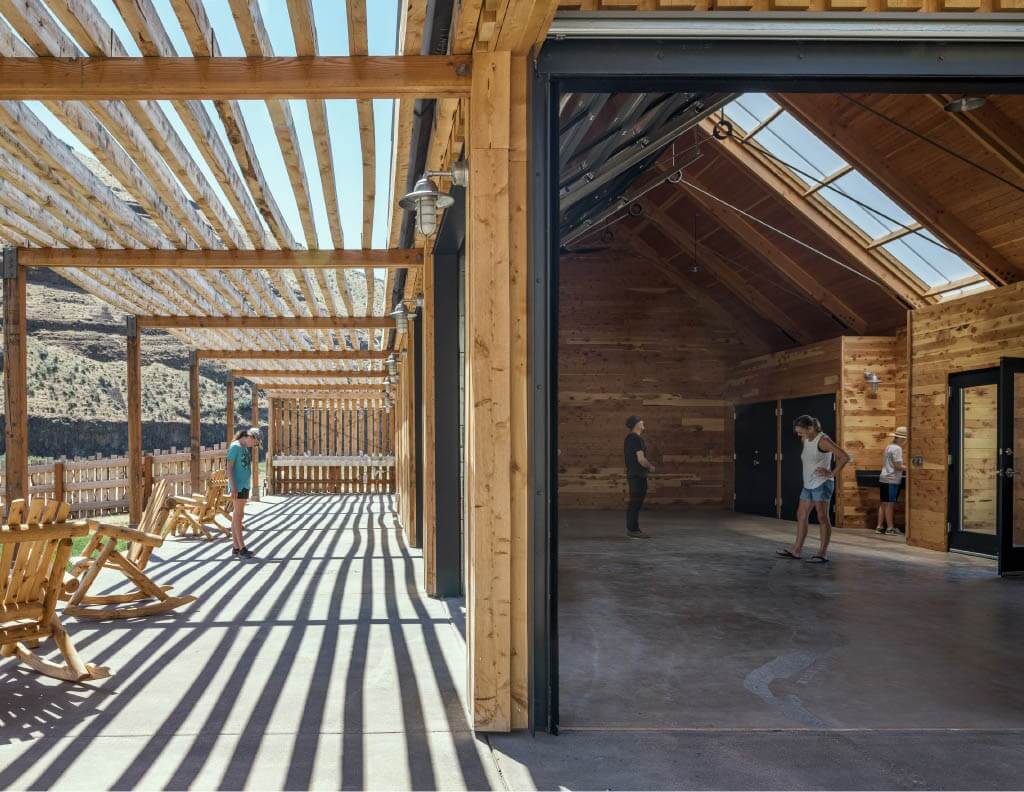
Adaptive reuse meets spatial justice in school design
Browsing through the contest winners and submissions, you will find a lot to admire. But for me, there are two honorable mention award winners, both of which public school redesign projects, that clearly stand out for the inspiration they offer to society at-large. The first is Olympic High School, which was transformed by Sundberg Kennedy Ly Au Young Architects. According to the submission description, Olympic High School in Bremerton, WA, was “constructed in 1977 as a series of unappealing low-slung dark boxes” which “had a dark maze-like circulation that disorienting and prevented students and staff from interacting.” This description, which could have been applied to the my high school in Illinois, is, sadly, fairly ubiquitous for American public school buildings constructed in that era. Transforming these school buildings into spaces where “students can take pride in themselves and their school” will require vision and dedication, both of which are evident in Sundberg Kennedy Ly Au Young Architects’ designs, which sought to reinforce community connections, engage with the environment, and inspire to students to think about their futures.
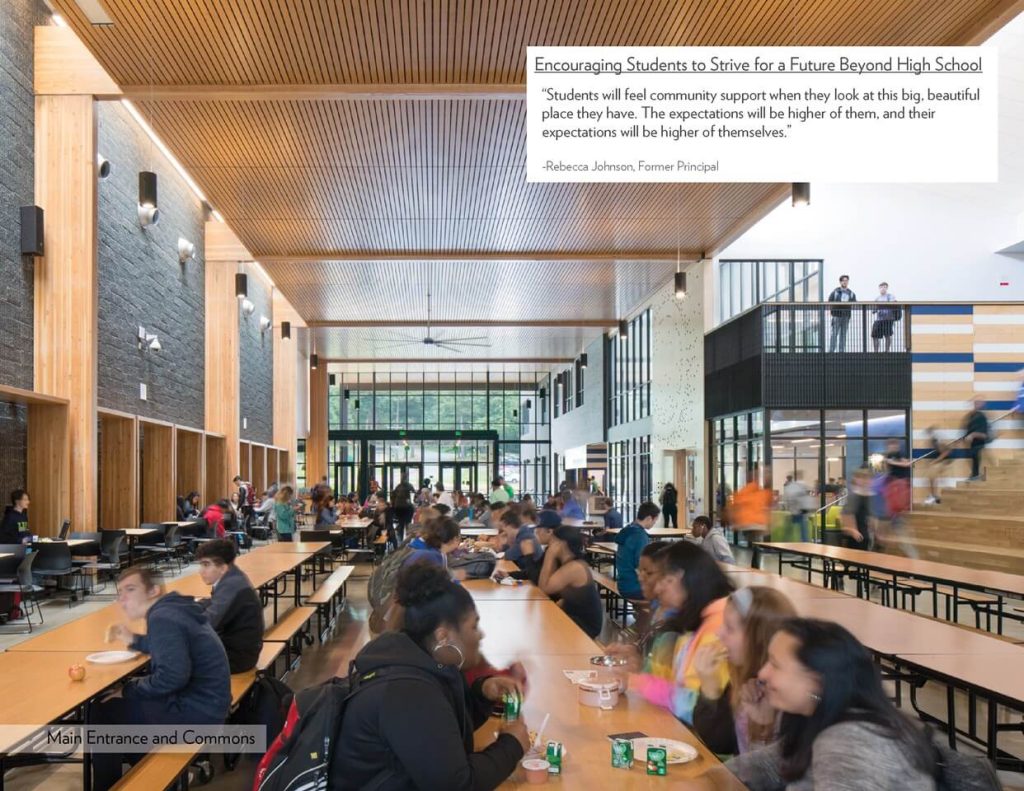
“The Olympic High School is an important example of how we can transform existing buildings,” Marsha Mayhem said. “We have all seen schools like this… it’s an inventive and terrific renovation of the building that shows us how we can look at and elevate resources around us to become more inspiring, terrific places to be.”
Similar accolades were given to the renovation of Lincoln High School by Barretti Architects. Reuse of the original Seattle Public School building significantly decreased the project’s carbon footprint while also allowing for the preservation of history. The project’s design seeks to connect students to nature by including elements like raw wood materials, natural light, and a set of roll up doors that open up to a courtyard. “We should value projects that are seeking to re-enhance existing structures because it’s environmentally responsible,” said judge Tatiana Bilbao (Tatiana Bilbao ESTUDIO), referencing how so many school buildings worldwide are in need of being not only renovated for students’ sakes, but also reimagined in a way that preserves their embodied carbon.
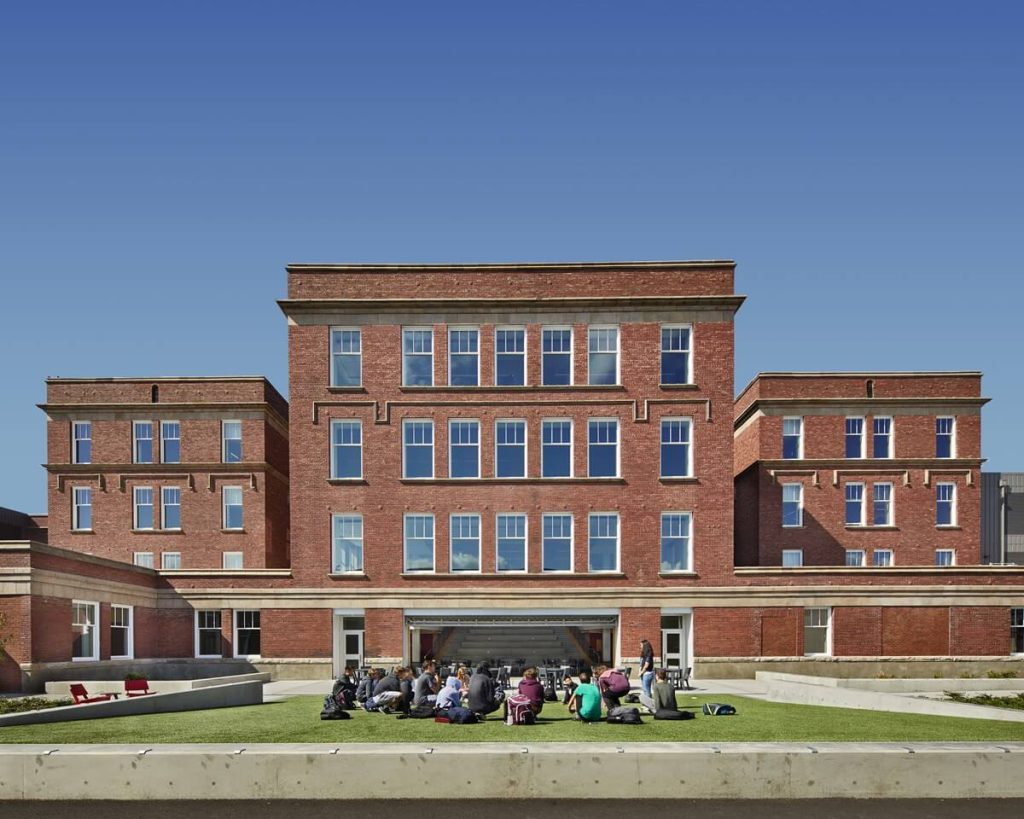
Ben Benschneider)
The winning contestants described here represent only a small sampling of the 20 submissions that were awarded either Honor Awards or honorable mentions. Interested in seeing more AIA Seattle Honor Award contest winners? Browse through the gallery here.
Natalie Bicknell Argerious (she/her) is a reporter and podcast host at The Urbanist. She previously served as managing editor. A passionate urban explorer since childhood, she loves learning how to make cities more inclusive, vibrant, and environmentally resilient. You can often find her wandering around Seattle's Central District and Capitol Hill with her dogs and cat. Email her at natalie [at] theurbanist [dot] org.


